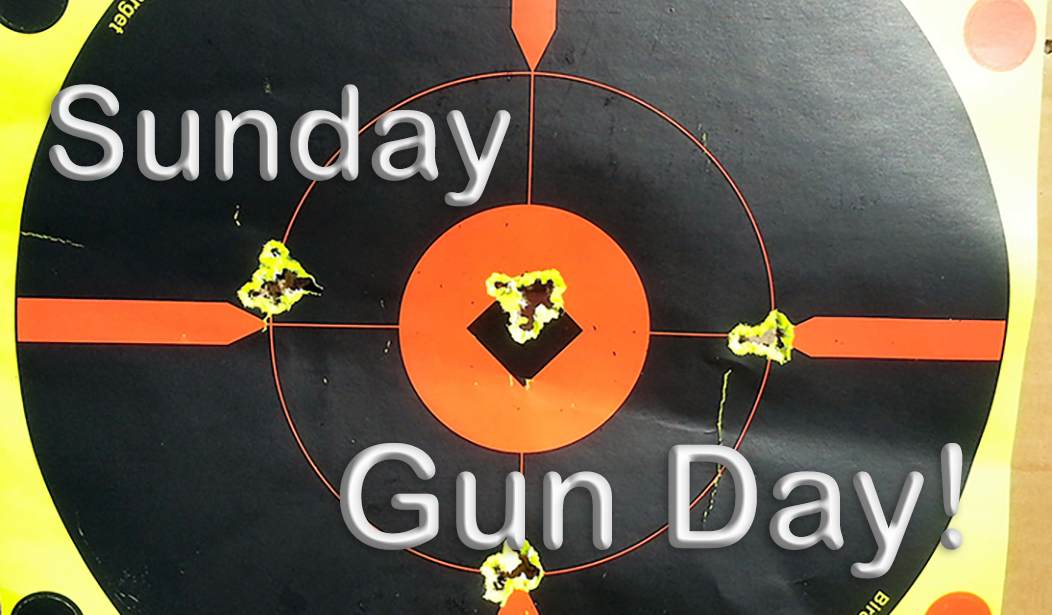I admit it - I’m something of a gun snob.
Of course, I am and always have been a staunch Second Amendment absolutist. Being a gun snob doesn't preclude that. I think that “shall not be infringed” means precisely that, and while my taste in guns tends to run more towards fine sixguns, pre-64 Winchesters, and Belgian Brownings, that doesn’t mean I don’t favor inexpensive yet reliable guns for people on a budget. That’s not what I mean when I describe myself as a “gun snob.”
 There are, though, some guns for which I just don’t see the point. They don’t seem to have any practical application that can’t be handled better or more efficiently by some other platform. Of course, if someone wishes to have one of these just for fun, or because they think it’s cool, or for whatever reason, that’s great; some things just puzzle me, making me wonder, what gun designer said, “Hey, let’s try this.” Granted that can be reason enough to experiment, but not every experiment is successful.
There are, though, some guns for which I just don’t see the point. They don’t seem to have any practical application that can’t be handled better or more efficiently by some other platform. Of course, if someone wishes to have one of these just for fun, or because they think it’s cool, or for whatever reason, that’s great; some things just puzzle me, making me wonder, what gun designer said, “Hey, let’s try this.” Granted that can be reason enough to experiment, but not every experiment is successful.
So here, without further ado, are five modern, commercially available guns for which I just don’t see the point. Note: None of these are for legal, crime, or any reasons other than practical application.
See Related: Black Bostonians Demand That Their Second Amendment Rights Be Respected
The Magnum Research BFR, or “Biggest, Finest Revolver.” (Uh huh.) This is a behemoth of a wheelgun, weighing in at from 4.5 to 5.5 pounds and chambering a hefty assortment of hefty cartridges including the .30WCF (30-30,) the .350 Legend, the .360 Buckhammer, as well as the .45 Long Colt/.410 shotgun. There is also a “short cylinder" model that takes more traditional revolver rounds, including the .357 Magnum, .44 Magnum, .454 Casull, .480/.475 Linebaugh, .500 JRH, and the .500 Linebaugh.
This is a novelty, to be sure, but to my thinking, a sidearm should be just that; something that is convenient to carry around in a belt holster all day. You can’t easily carry one of these behemoths in a belt holster, and honestly, if you’re going to tote around something that weighs 5.5 pounds, just go all the way, add a couple more pounds, and carry a rifle. This monstrosity weighs around twice what my favorite sixgun checks in at, a 4"-barreled Smith & Wesson 25-5 that handles my hot .45 Colt handloads with aplomb and is well-suited to all-day holster carry - I've done it, a lot.
This wasn’t an original idea with Magnum Research. Some years ago an outfit named Century Manufacturing made a .45-70 revolver, but the one example I’ve examined didn’t look to be of very good workmanship. Magnum Research, at least, makes a fine weapon, even if, like the BFR, it isn’t terribly practical for all-day holster carry.
The Taurus Judge Home Defender. The Taurus Judge and its counterpart, the Smith & Wesson Governor, is an odd-looking beast, a double-action revolver chambered for the .45 Colt but with an elongated cylinder to allow it also to fire .410 shotgun shells. Now that is a little odd in itself, but what the hell, the shotgun shells might be useful for snakes, or rats, and I know there are some .410 home defense shells, although it’s hard to see how the pipsqueak .410 round would be preferable over the venerable .45 Colt.
The Home Defender, though, takes the Judge platform and claps on a 13” barrel and a plastic forearm to produce a package with no stock that weighs 3.5 pounds. So it’s not really a handgun, and it’s not really a shotgun, and it’s not a rifle. I guess I just have little use for poor in-betweeners. Oh, and in case anyone reading isn’t familiar with how revolvers work, there is a gap between the cylinder and barrel that can emit hot gas and (if the gun isn’t properly timed) sometimes shavings of lead or jacket material – right where the shooter's non-firing arm might be. That seems like it could result in some painful burns, at best.
The 2.7mm Kolibri. I suppose, if you were looking to defend yourself against an undersized mouse or an overly aggressive cockroach, this just might be the thing for you. But for anything else? Brandishing one at an attacking criminal, of course, might cause the would-be robber to fall to the ground laughing, offering you a chance to run away.
This oddity was designed by an Austrian, Franz Pfannel, who looked with envy at the Baby Browning and its .25ACP cartridge and decided to go it one… lesser. Kolibri is German for hummingbird, and that’s appropriate. The 2.7mm proprietary cartridge for this piece is dwarfed by a .22 Short. According to “Cartridges of the World,” this is the smallest centerfire cartridge ever placed into production, firing a 3 grain, .10 caliber bullet at 650 fps, for about 3 ft-lbs. of energy at the muzzle. To call this round a pipsqueak is to do a grave disservice to honest pipsqueaks everywhere. The pistol built to fire this round was less than 3 inches long, with a 1.25-inch barrel. The Kolibri pistol weighed 7.7 ounces fully loaded. We can give this gun credit for portability and for being an interesting historical footnote – and nothing else.
See Related: Al Capone's Personal .45 Colt Up for Auction
The Gyrojet pistol, rifle, and carbine. This is a real oddball, not using a standard cartridge but rather a rocket-propelled projectile. This was actually a family of firearms developed by Robert Mainhardt and Art Biehl in the 1960s, all of which fired gyroscopically stabilized 13mm or 12mm rockets. The Gyrojets were recoil-operated semi-automatics but were cumbersome, awkward, slow to load, and not very accurate. What’s more, unlike a traditional projectile that is fired on a ballistic arc and leaves the muzzle with the highest velocity it will attain, the Gyrojet rocket projectiles needed a little “running room” to gain full speed.
To my thinking, it's the reputation for poor accuracy that really sinks these as practical arms. As I stand with the great Colonel Townsend Whelen, who famously said “Only accurate rifles are interesting,” I fail to see much that is interesting about the Gyrojet other than the novelty. A few Gyrojet arms showed up in movies, including the James Bond film “You Only Live Twice,” but they never saw much commercial success, and the company gradually faded away.
This last one isn’t a gun, but a cartridge: The .25 ACP. This mouse-gun round was introduced in 1905, to go along with the FN M1905 pocket pistol, and at the time had a niche as a round for the tiniest of tiny vest-pocket pistols. While the previously mentioned Kolibri makes the .25 ACP look like a real thumper, in today’s market I can’t see much reason for the continued existence of the .25 ACP round. In 1905 there weren’t as many alternatives. The various .22 rimfire rounds approached the .25 in performance, but the rimfire rounds in those days ran dirty and there were not many loads suited for personal defense. The .22 cartridges were mostly small-game, target, and gallery-rifle propositions. Now, though?
While there are some much-improved .25 ACP self-defense loads, there are likewise greatly improved .22 rimfire rounds. Both are pretty much on par; they have similar power ranges and both can be chambered in some almost impossibly tiny hideaway pieces.
The difference? Price. Even premium .22 rimfire rounds are cheaper, and cheaper ammo means the shooter can practice more, which is essential, even in a vest-pocket pistol. (Although I'm still waiting for a new .25 rimfire round.)
Everyone has their own preferences, of course; these are mine. Some folks may dearly love their BFR revolver or their vintage .25 ACP Baby Browning. And that’s great; as my grandfather was fond of saying, every cat has its own rat. But I’ll stick by my estimation. These are five items for which I can’t see much reason for – not for any legal reasons, strictly for practical reasons.
As for you readers, if you have any examples of your own, the comments are yours!














